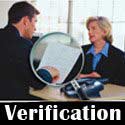 For chinese exporters, the safe, timely, and full payment is the top priority. As it has been mentioned before, foreign trade is a document transaction. As long as all the documents have been handed to the customer, the exporter would regard the goods as being handed to the customer as well. Then, how to get the payment from the customer? Advance payment might be most preferable, but the customers are always hesitant when facing this choice, they may, at best, pay a small amount as the down payment. In most cases, there would be mainly 3 ways to send money to china suppliers:
For chinese exporters, the safe, timely, and full payment is the top priority. As it has been mentioned before, foreign trade is a document transaction. As long as all the documents have been handed to the customer, the exporter would regard the goods as being handed to the customer as well. Then, how to get the payment from the customer? Advance payment might be most preferable, but the customers are always hesitant when facing this choice, they may, at best, pay a small amount as the down payment. In most cases, there would be mainly 3 ways to send money to china suppliers:
1. Telegraphic Transfer (T.T)
Telegraphic Transfer is to fax the documents to the customer to prove the goods have already been delivered. And then the customer would make the payment directly through bank by telegraphic to the exporter’s bank account. To carry out the T.T, the exporter needs to open a USD account, and inform customer of the account information in advance. PS: the bank will charge a fee for T/T remittance.
If it is a small-amount remittance, for instance, less than $ 500 USD, regular bank transfer is not worth the fee, even the commission charge will be tens of dollars. For small amounts goods payment or payment for samples, etc. credit card, Moneybookers, Paypal and other online forms of payments. Moneybookers and Paypal are common tools for small foreign exchange payments through e-mail. By signing up for a Moneybookers or Paypal account and entering the customer’s e-mail address and the amounts of fee, you can transfer money into your Moneybookers Paypal accounts. Then you can draw payments from the domestic ATM from the Moneybookers’ account or keep the payment to the Paypal account or transfer them to your other bankaccounts.
2. Document against Payment(DP)
The exporter would hand the full set of documents to the bank and commission the bank to retrieve money from the customer. Please be noted that the only thing the bank do is to help exporters transmit documents to the customers. And if the customer refuses to pay, the documents would be sent back to the exporter without any guarantee for the payment been actually made. That is to say, even if the documents are full and complete, the exporter would bear the risks of customers’ not paying, and then they would have to sell the products at low prices or simply ship them back.
3. Letter of Credit(LC)
The letter of credit is a written document both parties entrusted the bank to make to promise payment. It is conditional and indicates the trading of goods, quantity, quality, delivery time, and the corresponding provisions of the type of documents required and production requirements. Exporters would stock up according to the letter of credit, and then complete and collect the full set of documents, and deliver to the bank within the prescribed time limit. And when Bank checked the account, the payment would be made immediately. The operating costs for T / T and T / P are fairly less. But the common defect of the both means is that the exporter has to take the risk of the customers’ sudden change of heart and refuse to receive the goods. On the other hand, although the exporters have a tight grip on the property right, sometimes they also have to ship back the goods and sell it at a lower price in the foreign destination. And sometimes customers would also ask for a cut in price, all these would lead to an ugly result, that is: the loss. And the letter of credit L/C has, in theory, would well protect the interests of both parties. As for the exporters, with the credit guarantee from the bank, they can get the payment as long as they deliver the goods in accordance with the requirement. Therefore, although the letter of credit would cost a relatively higher commission fee, it is the most commonly used means of international payment, which would step back to a secondary place only after the two parties get along well with each other and accept one another’s commercial credit.
On the other hand, the letter of credit poses the highest requirement on the documents. The article of the letter of credit has a strict requirement on the standard of the documents, even the expression on the documents is detailed. The letter of credit should only be accepted as long as the whole set of documents met with the letter of credit. Any mistake, even if it is misspelled words and wrong punctuation, would theoretically be regarded as “discrepancy”. when Discrepancy occurs, the customer has the right to refuse to fulfill the letter of credit. Even if customers do not mind the discrepancies and are willing to pay, the bank will still fine for each discrepancy and the common amount of fine is $ 50 or more. Therefore, to some extend, even one mark of punctuation in the letter of credit may well worth $ 50, which poses a high demand for the precision of the documents. Besides, the letter of credit is highly professional. Anyone who is not familiar with the knowledge of foreign trade and letters of credit would find it difficult to understand the meaning of its provisions. And some unscrupulous traders take advantage of this by deliberately setting up traps in document terms or finding fault on purpose so as to come up with discrepancies, then threatening with the fait accompli of the goods having been delivered at the foreign dock, so as to lower the price of the goods. Therefore, the letter of credit sometimes can be a double-edge sword. Used nicely, it can guarantee payment and thusly the risks could be avoided and the payment could be collected without a hitch.






[…] https://www.chinaimportexport.org/popular-payment-methods-that-chinese-suppliers-accepted, 22.02.13 ???? ???????. ???????? […]
Hi,
Need your advice as i been contacted by some china company and i do agree on the price but they don’t want to accept payment from Paypal account… and they are requesting for Western Union or T/T… how can i trust them… please do advice how to do a safe payment way…